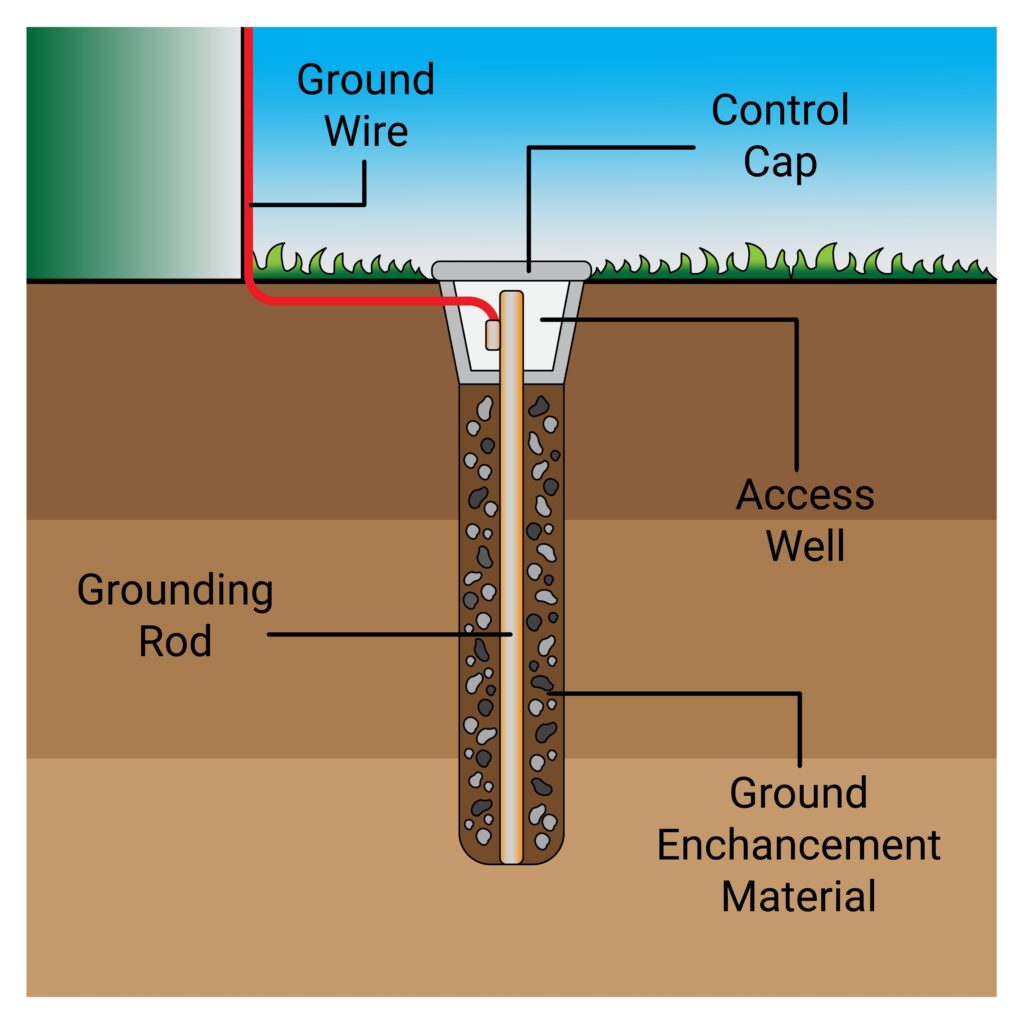NEC Article 250 is arguably the most important section of the Code for safety. Its primary goal is to protect people from electrical shock and to ensure the electrical system operates correctly.
It accomplishes this through two distinct but related actions:
- Limiting Voltage: Protecting against lightning, line surges, or unintentional contact with high-voltage lines.
- Stabilizing Voltage: Ensuring a constant reference point (Earth) during normal operation.
Grounding vs. Bonding: What’s the Difference?
This is the most common point of confusion. Article 250 separates them clearly:
1. Grounding (Connecting to Earth)
- Purpose: To limit voltage imposed by lightning or surges.
- How: Connecting the system to the earth via the Grounding Electrode System (NEC 250.50).
- Examples: Metal water pipes, concrete-encased electrodes (Ufer), ground rods, and ground rings.
2. Bonding (Connecting Parts Together)
- Purpose: To establish electrical continuity and a low-impedance path for fault current.
- Why: If a hot wire touches a metal enclosure, bonding ensures the current flows back to the source, tripping the breaker immediately. Without bonding, the metal case would stay energized and shock anyone who touches it.
- Key Rule: All normally non-current-carrying metal parts (raceways, enclosures) must be bonded.

Cable Systems & Raceways
Article 250 provides specific rules for how cables must be integrated into the grounding system.
Service Entrance Cables (SER & SEU) These must be grounded to protect against external surges (lightning). The grounded conductor (neutral) within these cables is bonded to the service equipment to ensure faults can clear.
Armored & Multiconductor Cables (MC, TC, AC)
- Internal EGC: Many cables like Type MC (Metal-Clad) contain an internal Equipment Grounding Conductor (EGC).
- Sizing: The internal EGC must be sized per Table 250.122 (based on the breaker size).
- Sheath Bonding: You must bond the metallic sheath to the EGC. This prevents a voltage potential difference between the cable armor and the ground, which could cause a shock.
Cable Trays & Conduits
- Continuity: Metal cable trays must be bonded together to form a continuous system.
- Safety: This ensures that if a wire frays and touches the tray, the tray itself becomes the path to ground, tripping the breaker rather than staying energized.
Protection Devices
Article 250 mandates specific protection based on the application:
| Type | Purpose | Common Locations |
| GFCI (Ground Fault Circuit Interrupter) | Protects People from shock. | Bathrooms, Kitchens, Outdoors, Garages. |
| GFPE (Ground Fault Protection of Equipment) | Protects Equipment from burnouts. | Large services (>1000 Amps at 480V/277V). |



